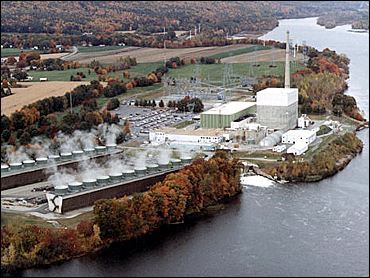In its inspection report dated April 16, 2012, (available in the agency’s online ADAMS library using Accession No. ML12107A414), the NRC issued Green findings – the least severe in its four color-coded severity levels – for two equipment failures at Vermont Yankee (VY).
In this case, Green clearly related to the finding level and did not reflect envy on the part of any other plant owner to replicate the behaviors that factored into these failures.

The first failure story began on November 23, 2009, when workers at VY wrote a condition report because a small window called the “sight glass” for a service water pump was dirty and cloudy. (The service water pumps take water from the river and pipe it throughout the plant to cool equipment.) Workers check the level in the sight glass every eight hours to verify that the pump has sufficient lubricating oil.
On December 9, 2009, workers wrote another condition report after finding that service water pump had too little oil. They reported that the sight glass had a shadow line masking the true oil level. On December 10, workers added oil to the pump – but did nothing about the sight glass problem.
On January 31, 2011, a worker heard unusual noises coming from the service water pump as it ran. The worker checked the sight glass and observed the proper level. But upon closer examination, the worker determined that there was no oil at all visible in the sight glass and that years of operation with the proper oil level had left a stain at the site glass at that point. Operators turned the pump off and smoke emanated from its motor. An investigation determined that the pump operated without proper lubrication that damaged the motor’s bearings.
Workers replaced the service water pump’s motor. And the sight glass.
The second failure story began on September 14, 2011, when the control room operators received an alarm for one of the two uninterruptable power supplies (UPS) installed in 1990 to provide reliable electrical power to some of the valves in pipes connected to the reactor vessel. Each UPS has batteries and a motor-generator set that can provide power to the valves in case the offsite electrical grid is lost.
Workers determined that the tachometer used to control the motor’s speed had failed. The coupling for the tachometer is a flexible drive unit consisting of a steel hub and a polyurethane body. Workers diagnosed that the polyurethane hardened over the years causing it to eventually fail due to this aging.
In repairing this UPS, workers found that the second UPS had the same parts and had been placed in service at the same time. So, they initiated a work order to replace the coupling for the second UPS during the refueling outage scheduled to begin on October 8, 2011.
On October 30, the work order was canceled and the replacement of the aged coupling on the second UPS deferred until June 30, 2012.
But the worn-out part did not cooperate. It broke on November 19, 2011. Workers replaced the coupling.
Our Takeaway
Nuclear power plants are large industrial complexes. Things can and do go wrong.
But when things go wrong that should have been prevented are added to the things that go wrong anyway, it’s just too many wrongs.
The second failure is easier to rationalize. The tachometer couplings had not been covered by the plant’s aging management programs because their vendor manual had not specified a service life. After the first failure, workers properly identified that the coupling on the second UPS was equally vulnerable and attempted to replace it before it failed. After the second failure, workers evaluated the part and established a 12-year replacement schedule to prevent future recurrences.
The first failure is tougher to excuse. The sight glass was determined to be impaired. Within weeks, that impairment causes the pump to experience a near-miss by operating with excessively low oil level. Yet the plant continued to operate the pump with its unreliable sight glass until inadequate lubrication damaged the pump’s motor beyond repair. Then and only then was the bad sight glass replaced. Days late, and many dollars short.
“Fission Stories” is a weekly feature by Dave Lochbaum. For more information on nuclear power safety, see the nuclear safety section of UCS’s website and our interactive map, the Nuclear Power Information Tracker.
